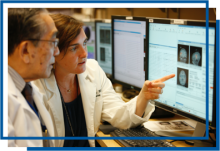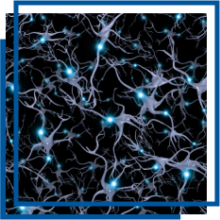Stewardship
Effective and efficient stewardship across all programs, together with thoughtful priority setting, planning, evaluation, and continuous data-driven improvement, is integral to all NINDS policies and programs.
NINDS Strategic Plan home » Stewardship
Table of Contents:
- Programs and Policies in Service of Good Stewardship
- Planning and Priority Setting
- Evaluation, Analysis, Metrics, and Continuous Improvement
Congress has charged NINDS with responsibilities that are vital for advancing public health and entrusted the Institute with substantial authorities and resources to accomplish this mission. Effective and efficient stewardship of this public trust is integral to all NINDS policies and programs. Attention to stewardship across all programs, together with thoughtful priority setting, planning, evaluation, and continuous data-driven improvement, enable the Institute to be an effective steward.
Programs and Policies in Service of Good Stewardship
Good stewardship is inherent in the design and execution of all NINDS programs, policies, and practices presented in this Strategic Plan.

Good stewardship is not a separate obligation but rather is inherent in the design and execution of all NINDS programs, policies, and practices presented in this Strategic Plan and in the Institute's core strategies. NINDS relies upon peer review of all research proposals to ensure scientific quality. Extensive NINDS collaborations leverage the Institute's investments to maximize their benefit. The Institute's leadership on enhancing rigor and transparency of research minimizes the waste of time and resources on following up on erroneous prior research. NINDS' emphasis on data sharing maximizes the impact of research findings and reduces unnecessary duplication. The Institute actively manages large projects, with interim analyses of large clinical trials, monitoring of milestones in large clinical studies and preclinical therapy development projects, and, when appropriate, shifting funds to the best current opportunities. NINDS provides research resources and reagents that take advantage of economies of scale, empower small laboratories, and make best use of human brain tissue and genetic samples. Because a robust and talented pool of dedicated researchers is the most essential factor in driving progress, NINDS training and diversity programs recruit and develop the best scientists and physicians from the full breadth of the nation's talent pool. Attention to the Institute's internal workforce culture is an integral part of this plan because the scientific and management staff are the front line in ensuring good stewardship throughout NINDS programs. Similarly, communication and dissemination are essential to the Institute's mission, for example by providing transparency to the public on NINDS-supported research and engaging stakeholders to help inform the Institute's priority setting.
Planning and Priority Setting
In setting priorities, NINDS weighs public health needs, scientific opportunities, and the Institute’s unique responsibilities and capabilities in the overall research ecosystem.

The number of outstanding research questions about neurological disorders multiplied by the scientific opportunities for answering them generates far more possibilities for research than NINDS can pursue, as evident in the large numbers of high-quality research proposals received each year. In setting priorities, NINDS not only weighs public health needs and scientific opportunities, but also considers the role the Institute plans in the broader research ecosystem by virtue of the Institute's unique responsibilities and capabilities.
As highlighted in the Message from the Directors to inform priority setting NINDS engages the public, disease advocates, research community, clinical practitioners, and the NANDS Council, and heeds guidance from Congress. NINDS priorities fit within the broad guidance of the Department of Health and Human Services Strategic Plan and the NIH Strategic Plan and are informed by disease-focused plans, trans-NIH plans, and scientific workshops on a variety of diseases and topics, all of which engage multiple stakeholders.
NINDS conducts program evaluation activities and strategic planning efforts to continuously evaluate the effectiveness of our programs and monitor the evolution of the scientific landscape.
Evaluation, Analysis, Metrics, and Continuous Improvement
NINDS will evaluate every new and existing program and policy in a timely manner, and act on the findings.
NINDS monitors the evolution of the scientific landscape to determine whether programs continue to be appropriate and evaluates the effectiveness of programs to improve or replace them as warrented. NINDS will ensure that every existing program and policy is evaluated in a timely manner, that each new NINDS policy or program clearly states goals and an evaluation plan at its inception, and that the Institute continuously improves or replaces programs based on the findings. In response to advice of the previous NINDS Strategic Plan, the Institute created an internal Analysis Working Group (AWG) with membership from across the extramural divisions and the offices of the Institute Director. The AWG leads many analyses and evaluations. The Institute routinely discusses results from these analyses and evaluations with the NANDS Council.
Adapting a principle from biomarkers development, NINDS employs metrics and non-quantitative indicators that are “fit for purpose,” that is, designed for the program or policy in question. Depending on the nature of the program, the Institute may monitor various combinations of short, intermediate, and long-term outcomes—for example, a short-term check may look at whether an initiative attracts a wide range of proposals that peer review rates as outstanding or an encouraging number of applications from investigators new to a field. Intermediate monitoring may focus, for example, on what publications emerge, whether clinical trials are efficiently conducted, or the extent to which intended research resources are created. In the long term, an evaluation looks directly at whether the goal of the initiative is accomplished, e.g. is a causative gene, biomarker, or therapy developed; is a resource used for valuable research; do trainees succeed; does a clinical trial network improve efficiency and effectiveness of trials; or have stroke rates decreased as intended.
Basic research makes up the largest part of the NINDS research portfolio and presents the greatest challenge to evaluation. Several studies have confirmed the importance of basic research for medical progress, but also consistently shown that the value of basic research often does not become apparent for decades after the research is published and cannot be meaningfully evaluated relying on quantitative measures such as bibliometrics (measures based on number of publication and citations). For these reasons, NINDS evaluations of basic research focus on qualitative evaluation of scientific content, including peer review for continuing support. The large number of prestigious research awards to NINDS investigators provides some assurance that NINDS supports high quality innovative research. These awards include numerous Nobel, Lasker, MacArthur, Breakthrough, and other honors. The Institute also performs thorough retrospective reviews of major advances in treatment of neurological disorders, which trace key contributions from NINDS research.
